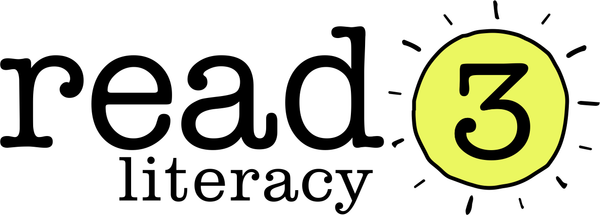Latest research says establish letter-sound links ASAP in struggling readers
An interesting article, published in Scientific Studies of Reading in 2020, has confirmed the need to establish letter sound links early amongst struggling readers.
Introducing letters at a faster pace during the first year of instruction led to better word reading and spelling outcomes, particularly for struggling readers. Children who need more time to develop letter-sound knowledge to the point of automaticity, get more practice with all letters with a faster pace of introduction. The more letters they know, the more they can engage with classroom instruction.
Establishing letter-sound links and learning to blend sounds for decoding words are two different things. While early exposure to all letters and their sounds is beneficial for struggling readers, when it comes to teaching them to decode words, a limited number of letters works best. With a limited number of letters, the focus is on learning decoding strategies without overloading the children with processing difficulties.
So, what should I do to build letter-sound knowledge?
1. Provide meaningful links between letters and sounds

The aim is to have the letter-sound links established so firmly that a child can say the sound for any given letter, and write the letter for any given sound, quickly and efficiently.
To do this we recommend the Easy Alphabet as it was designed to help children make meaningful links between sounds and letters. Children need a hook to anchor the letter shape to the letter sound so they can store it in long-term memory. The bigger the hook, the better!
Many alphabets just use sound cues or picture cues, but the Easy Alphabet uses sound, picture and story cues. Linking both the sound and shape of the letter with a story allows struggling learners to make stronger connections to the sound of the letter as well as how to write it.
2. Increase phonological awareness

Research has shown that greater phonological awareness is associated with greater letter-sound knowledge. If a child has poor letter-sound knowledge, and is taking forever to learn new letters and sounds, they may have limited phonological awareness and need more than the alphabet in these early stages.
The Read3 program teaches phonological awareness and letter-sound knowledge concurrently to set up the strongest foundational skills for early literacy development.
3. Focus on all letters as quickly as the child can manage

Teach all sound-letter links at the same time that you are developing early literacy skills. I use the Easy Alphabet for unknown letters alongside Step 1 of the Read3 program. That way I can target phonological awareness and early decoding skills (with a limited set of letters) while ‘filling in the gaps’ in their letter-sound knowledge.
The first step in determining a child’s current knowledge of letters to find out what they do and don’t know. This can be a simple screening process:
- Give the child a whiteboard and ask them to write the letter for each sound that you say.
- Go through the alphabet one sound at a time. You may like to start with the first letter of their name for confidence, otherwise work through the consonants first then add the vowels. This eliminates ‘false positives’ due to rote learning.
- If they are reluctant, you write down letters and see what sounds they say for each (again, start with the consonants).
- Record which sounds they do and don’t know.
- Use the Easy Alphabet, to introduce letters they don’t know in any order.
Be mindful that the following letters – c, g, h, i, e, u a, r q, w, y – may be more difficult as there is no sound clue in the name of the letter. The child is more likely to need the story cues longer for these letters. Confusion between similar looking letters is also common – b/d and m/n. Teach one of the pair to automaticity before introducing the other letter.
Easy Alphabet resources enable children to master alphabetic skills quickly

Using the Easy Alphabet is a great way to increase letter-sound knowledge and build confidence. The range of activities and games are easy for parents to use at home.
We recommend children start learning the story cues using the practice sheets. We focus on learning the story, drawing the picture, then practising the letters by copying. Research indicates that tracing letters is not as effective as allowing the child to make their own motor memory through freehand letter formation. Just place each sheet in a plastic sheet protector and use over and over again.
Many parents like to have the display cards to put up around the house for the letters they are learning that week, and the deskmate is recommended for school and home to support correct letter formation.
Once basic knowledge of a few letter-sound links have been established, it is time to start automating those links with Easy Alphabet card games. Memory and Fish are ideal for beginners and Speedy3 is a fun way to build instant recall of letters and sounds when reading and writing. All three games are included in our Speedy3 Card Game pack.
For those working in schools or private practice, we recommend the complete digital alphabet kit, which offers unlimited printing, plus read-made sets of Speedy3 Cards.
Share your thoughts
If you have any other research, tips or resources that you have found particularly useful in building letter-sound knowledge, please share!
References
